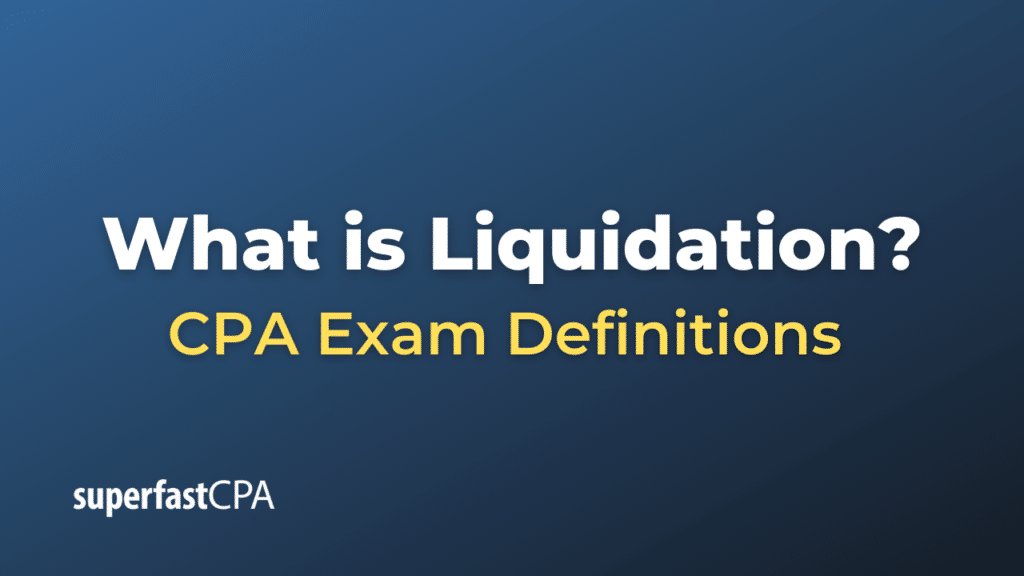Liquidation
Liquidation is the process of winding down a company and distributing its assets to claimants, which typically occurs when a company is insolvent, meaning it cannot pay its obligations when they are due. The primary purpose of liquidation is to ensure that all the company’s debts are properly paid off. If there are any remaining assets, they are then distributed to the shareholders of the company.
The process of liquidation generally follows these steps:
- Cessation of business operations: The company stops its business activities and operations.
- Selling assets: The company’s assets are sold off, and the proceeds are used to pay off its liabilities. The assets can include physical assets like real estate and equipment, as well as intangible assets such as patents or trademarks.
- Payment of liabilities: The proceeds from the sale of assets are used to pay off the company’s debts and obligations. There is a legal order of priority for these payments. Typically, secured creditors are paid first, followed by unsecured creditors, and then shareholders, if there are any remaining funds.
- Dissolution of the company: Once all the debts have been paid off and the remaining assets have been distributed, the company is formally dissolved.
It’s important to note that liquidation is usually seen as a last resort and typically occurs when a company is unable to meet its financial obligations. Liquidation results in a loss for shareholders, as they are the last in line to receive any remaining assets, and in many cases, shareholders may not receive anything if there are no remaining assets after all debts and liabilities are paid.
Example of Liquidation
Let’s consider a hypothetical example of a company undergoing liquidation.
Imagine there’s a company called ABC Manufacturing. Due to poor market conditions and substantial debt, the company has become insolvent and cannot meet its financial obligations. The decision is made to liquidate the company.
The liquidation process unfolds as follows:
- ABC Manufacturing ceases all operations and begins the process of selling off its assets. This includes its manufacturing equipment, warehouse properties, office equipment, and any remaining inventory.
- The company’s assets are sold for a total of $5 million.
- The proceeds from the asset sale are used to pay off ABC Manufacturing’s liabilities. These include $2 million owed to secured creditors (such as banks), $1 million to unsecured creditors (such as suppliers), and $500,000 in salaries owed to employees.
- After paying all its debts, ABC Manufacturing has $1.5 million left.
- This remaining amount is then distributed to the company’s shareholders. If the company has 1.5 million shares outstanding, each share would receive $1.
- Following the distribution to shareholders, ABC Manufacturing is formally dissolved.
Remember, this is a simplified example. The actual process of liquidation can be quite complex and is often managed by a court-appointed trustee or liquidator, who ensures that the process is carried out in accordance with the law and that all creditors and shareholders are treated fairly.













